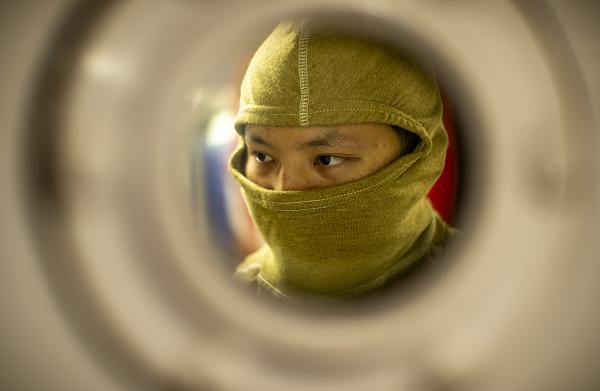
Pacific Ocean. (November 2, 2024): In 1946, shortly after the end of World War II, Congress established the Atomic Energy Commission (AEC) to succeed the wartime Manhattan Project. One of the new agency’s missions was to harness the incredible power of the atom to drive America’s warships and submarines. In this photo by Seaman Apprentice Roselia Garcia, Machinist's Mate (Nuclear) 2nd Class Justin Lin, from Fort Lauderdale, Florida, closes a watertight door during general quarters drills aboard Nimitz-class aircraft carrier USS George Washington.
Before the discovery of nuclear power, America’s naval fleet was fueled by petroleum products that were expensive, difficult to deliver at sea, and limited the range a ship could operate before needing refueling. Nuclear power offered the prospect of an unending supply of clean fuel on board that allows a vessel to theoretically remain at sea forever.
At the time, the technology to build and operate a shipboard nuclear propulsion plant did not exist and operating such a propulsion system inside a submarine under deep sea conditions presented a number of technical difficulties. The Navy turned to a brilliant young Captain Hyman G. Rickover to make nuclear powered submarines a reality. Captain Rickover and a team of scientists were assigned to the Navy Bureau of Ships, the organization responsible for future ship designs. He and his officers were sent to the AEC Laboratory at Oak Ridge, Tennessee for a year to learn the fundamentals of nuclear reactor technology.
Just seven years later, Rickover’s team designed and built the world’s first nuclear powered submarine, the USS Nautilus. Three years after that, the Nautilus accomplished the impossible when the ship reached the geographic North Pole, skippered by Commander William Anderson and a crew of 116 Sailors. The feat proved the American Navy could go to any ocean in the world, anytime, and remain there virtually as long as desired.
Having proven the technology, the Navy began a ten-year program that produced four nuclear submarines and the world’s first nuclear-powered aircraft carrier the USS Enterprise with eight reactor plants. Over the next seventy-five years, the Navy has installed 279 reactors using thirty-three designs on ships that have travelled 171 million miles with 7,500 reactor years of safe operations.
Today, the Navy operates ninety-nine reactors and seventy-nine nuclear-powered warships – including the largest, most capable warship ever built, USS Gerald R. Ford.
(Editors’ Note: One of Admiral Rickover’s key lieutenants in our nations’ nuclear program was a future president… Jimmy Carter.)


